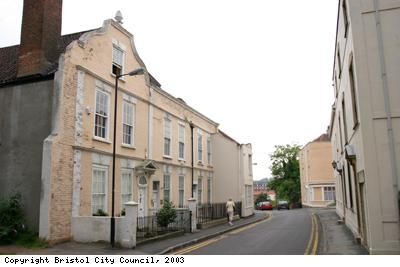Page 1 of 1 pages
Historic site, Guinea Street

Description:
Historic site, Guinea Street. A guinea is a gold coin, named after the West African coast, known as the Guinea coast, from which so much gold came from.Some guinea coins featured an elephant castle, the emblem of the Royal African Company. This London-based trading company had control over the English trade in gold, ivory and slaves on the coast of West Africa until 1698.
The house at the end of the row (nos 10-12) was owned by a merchant and sea captain, Captain Edmund Saunders. He was responsible for 20 slaving voyages and was also a warden at St Mary Redcliffe Church between 1732 and 1739. In 1759 Joseph Holbrook, another sea captain resident in the street, offered a handsome reward for anyone capturing a negro man, named Thomas, a native of the island of Jamaica …5’6” high, speaks good English and wears a brown wig. A sugar house on the corner of lower Guinea Street was set up in 1797, one of a number in this area.
With thanks to the authors of the Slave Trade Trail around Central Bristol, Madge Dresser, Caletta Jordan, Doreen Taylor.
The language used to describe people of African descent in the 18th, 19th and 20th centuries is unacceptable in today’s terms. We cannot avoid using this language in its original context. To change the words would impose 20th century attitudes on history.
Copyright: Copyright BCC Museum
Page 1 of 1 pages

